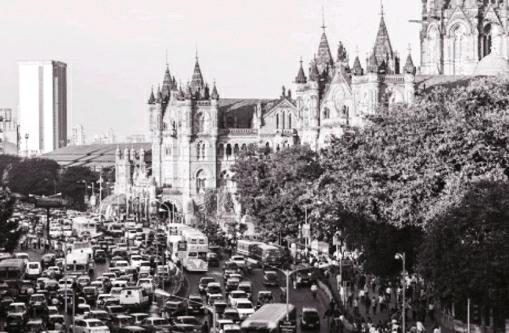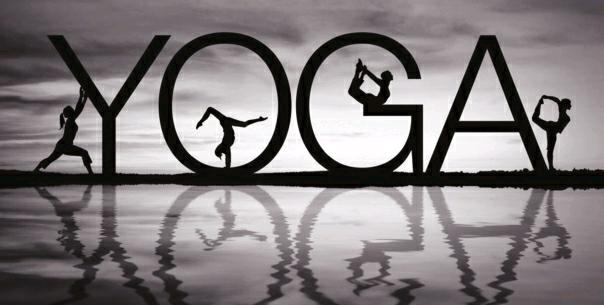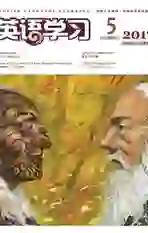印度小见(1)
2017-06-06ByAaronA.Vessup
By+Aaron+A.Vessup
It might seem easy traveling to a warm country like India when winters cold fangs are nipping at ones heels.1 Mumbai, the capital and “Gateway” to this part of the orient was my city of choice.2 Before this trip I had become familiar with India food. Enjoying Tempura dishes and spicy curry laden menus, was posing no problem.3 Like many people, I had also seen Bollywood musical flicks, Hollywood movies like A Passages to India, and Slumdog Millionaire.4 I assumed my preparations were adequate and believed there would be no surprises.
At the Chhatrapati Shivaji International Airport, hungrystaring eyes bore through me, as a human throng buzzed with excitement.5 Many hands held signs of personalized welcomes.6 Mysterious “hijabs7” cover heads of most females. These are the many Muslims among the religious Hindus.8 Many men wear thick beards. Skin colors range from lightly tanned yellow, to virtually black.9 So many people! But no one is waiting there for me. Straining my tired eyes for the promised hotel shuttle pickup proves fruitless.10 Thus, came my first shock of reality. Guards at the gate are firmly against the idea of my turning back. I will have to find my own way to the hotel. Eventually, a tie-wearing gentleman flashes an official looking badge saying that he will help me get to the hotel.11 He then pairs me with another guy, and gives him the hotel address. This new fellow takes me on a long foot journey underneath the airport waiting area.
“Which one do you like?”
He asks as his arm waves in a short sweeping motion at the row of parked vehicles. But his words come out so fast they sound like a foreign language. I ask him to repeat himself.
“What did you say?”
Now he rephrases12 his question.
“Do you want the small size or bigger car?”
In front of me are large sedans, jeeps, and tiny bug-like BYDs.13
“Small is fine.”
In India passengers pay in advance based on destination. Understanding English spoken by most India people I meet will present a new challenge. English is my native tongue, but most of the time in this country I will find stylistic rhythms or word stresses throw me off.14 Punjab and Hindi are at least two of the languages spoken here.15
As we drive toward the city, a quiet deadness of the early morning forces me to hit the window button letting in fresh air. The clean, cool smell off the sea nearby is invigorating16. It is nice feeling the mild breeze wraps around my head like a welcome warm caress.17 I inhale18 the fresh air deeply. I can hardly wait to get to the hotel and sleep.
But the suspense19 is killing me. What does India look like at night? I have not really seen anything beyond the airport. For a long time we whiz20 along a dark highway. After several minutes we slow down, making several turns going through roadway construction projects, passing darkened buildings and shadowy commercial signs. Everything looks dim, blurry and mysterious.21 At one point the car slows to a crawl22 as we enter a commercial area. All shops are closed, but this appears to be a mix of shopping and residential dwellings. As we pass one dimly lit dwelling, a naked bulb swings outside a large gate,23 I see a sign announcing the Executive Enclave Hotel. This is my hotel. But the driver keeps on motoring further up the street. I am too tired for a merry-go-round egg-hunt.24
“Stop! Go back! There it is!”
“Ohhh... You see it? Thanks.”
The car gears grind and shift in reverse and we went back up to the gate.25 The guard swings open a wide gate and we coast down a sharp steep incline and quickly are at a brightly lit entrance,26 a small hotel lobby. During the hotel registration my problems with understanding spoken English are reintroduced. The front desk informs me that my arrival is eight hours earlier than booking. I now will need to pay for another room if I want to shower and sleep now. Consolation is a sumptuous breakfast automatically included.27 Everything is sleepy quiet, warm but dead. I am sweating beneath three layers of clothes badly in need of a shower.
ATM crisis. Later in the day I investigate28 four suggested places where ATM machines are located. None of these banking machines prove functional.
After try a few winks of sleep29 I make a call to my friend, Arunji Gandhi. He is the grandson of the late leader of nonviolence, Mahatma Gandhi30. He has a shock of white hair on his crown and neatly trimmed mustache.31 His regal bearing exudes confidence behind thick, black rimmed eyeglasses and a noticeable twinkle in his eyes.32 Its hard to believe that he is 83 years of age. A dedicated Yoga practitioner, Arunji moves with deliberation, and gravity.33 I am honored that he can fit me into his busy schedule. We set up a meeting time for the following morning. When we meet we ride a three-wheeled, “Auto Rickshaw”34, taxi and search for a Starbucks. It has been 10 years since our meeting in Memphis at the Non-Violent workshop.35 We will meet another day to tour the city of Mumbai.
Upon returning to the hotel, the desk person excitedly informs me of a new location near the hotel that now has a working automatic banking machine.
“You must go there quickly. Hurry, because there will probably a long line there soon. These machines usually run out of money before the day is out.”
I am happy to have not needed to ask him to repeat himself. India is experiencing a monetary crisis, as the government is slowly introducing new currency bills for public commercial transactions.36 True, in the daylight hours there are people everywhere. It seems that men are loitering37 in groups, standing or sitting around doing nothing. Unemployment must also be a big problem here. Very few women are walking about. The air seems clean but the surroundings are not. I feel lucky when my bank card works and I come away with a crisp, new, single 2,000 Rupee bill.38 Seeking reward myself for this success, I enter a nearby coffee shop that looks comfortable. The wonderful smells from the oven tell me that baked goods are on hand. Its a place for me to sit and read a local newspaper. Soon more stores are open and I attempt to pay my bill using the new India currency.
“Were sorry. We dont have any change, 2,000 is such a large amount. Do you have anything smaller?”
“No I dont. But is a Visa credit card okay?”
“Sure, no problem. Do you need a receipt?”
I am increasingly feeling frustrated. Still stuck with a large currency note from India, but I have to find a way to break it down.39
Photos sites. Luckily, there are many unique things to be seen that do not cost money. A man is wearing a white turban40 on his head. His dark brown face is deeply lined, profiled sharply by a long white, hairy beard and handle-bar mustache.41 His stiff body is draped in a white sheet, with holes exposing his brown knees and scabby legs.42 He sits low on a concrete block near a vegetable vendors two-wheeled cart.43 He provides a stark contrast to the grungy background.44
One thin, bony, middle-aged women, with a dark purple“Sharong” wrapped around her body, marches up the steep street, balancing a large straw basket nonchalantly on her head.45 The sun is already high, her face glistens with perspiration as her quick bare feet patter away.46 Beggars crawl around on the ground, dark and dirty. Some lean against crumbling47 walls or half collapsed wooden fences. Sometimes these ghostly human forms clutch frail limbs of children to keep them near,48 or hug babies beneath layers of dirty cloth. When in cars waiting at busy intersections, beggars weave in and out of traffic with metal tin cups outstretched,49 tapping on closed air conditioned car windows. Along one highway there is a rusty wall-like structure of slum dwellings looking like a spooky mountain carved in a garbage dump.50 These are pitiful sites. I have read about poverty and corruption in India, and now the meanings of these concepts are beginning to have an impact.
Touring the city highlights and museum is still on the agenda. While this place seems mysterious and secretive51, I want desperately to see something pleasant and eat something delicious. On another day, our car driver will take Arunji and I to an area called “Island City”. This is a highly affluent part of the city where movie stars and rich business moguls are said to reside.52 Shopping centers here house only international branded goods. This area has no open-air bazaars, or street vendors, with souvenir trinkets spread on blankets along concrete curbs.53 Arunji still forewarns54, “Be careful where you step. Dog poop55 is not the only problem here!” But, there are no signs of human poverty there. Back in the hotel I take longer showers, but these jarring56 impressions do not wash away.
1. fang: 尖牙,這里比喻刺骨的寒冷;nip: 咬住,轻咬。
2. 孟买,马哈拉施特拉邦首府以及通向这片东方之地的门户,是我这次旅行的选择。Mumbai: 孟买,印度最大的海港和重要交通枢纽,素有印度“西部门户”之称;gateway: 通道,入口;orient: 东方世界,指与西方世界相对的国家以及地区,这里指代的是印度。
3. Tempura: 天妇罗,面拖油炸蔬菜或海鲜(一种日本菜肴);curry: 咖喱;laden: 充满的,装满的;pose: 引起,造成。
4. Bollywood: 宝莱坞,位于孟买的电影制作中心;flick: 电影,影片;Hollywood: 好莱坞,位于美国西海岸加利福尼亚州洛杉矶的电影制作中心;A Passage to India:《印度之行》,于1984年在北美上映,改编自英国著名作家福斯特的同名小说,影片探讨了英国与其殖民地印度之间的文化冲突;Slumdog Millionaire: 《贫民窟的百万富翁》,于2008年上映,改编自印度作家维卡斯·史瓦卢普的作品《Q&A》,展现了印度的文化和思想。
5. Chhatrapati Shivaji International Airport: 孟买国际机场,Chhatrapati Shivaji是印度17世纪马拉塔帝国皇帝的名字;bore: (令人紧张地)盯住看;throng: 一大群人,人群;buzz with:(地方或一群人)充满嘈杂声,热闹喧哗。
6.无数只手举着写有人名的接站牌。personalize: 在……上标出姓名。
7. hijab: 穆斯林女性戴的面纱或头巾。
8. Muslim: 穆斯林,伊斯兰教教徒;Hindu: 印度人。
9. tanned: 被晒成棕褐色的;virtually: 几乎,差不多。
10. 我撑着疲惫的双眼仔细搜寻,也没有找到预先订好的酒店来接站的班车。strain: 竭力,用尽全力;shuttle: (两地间短程穿梭运行的)交通工具。
11. flash: 迅速亮出某物(随即收起);badge: 徽章。
12. rephrase: 重新措辞,换个说法。
13. sedan: 轿车;BYDs: 比亚迪汽车公司生产的汽车。
14. stylistic: 语体上的,语言风格上的;throw sb. off: 使迷惑,使困窘。
15. Punjab: 旁遮普语,是印度宪法承认的语言之一,使用旁遮普语的人口主要分布于印度西北部的旁遮普邦和巴基斯坦东北部的旁遮普省;Hindi: 印地语,是印度的两种官方语言之一,是印度国内最为通行的一种语言。
16. invigorating: 使人精力充沛的,使人精神焕发的。
17. wrap: 包,裹;caress: 爱抚,抚摸。
18. inhale: 吸入。
19. suspense: 悬念,未知。
20. whiz: 飕飕地飞驰。
21. dim: 昏暗的;blurry: 看不清的,模糊的。
22. crawl:(车辆)缓慢行进。
23. 我们经过一个昏暗的建筑,一只裸露的灯泡在大门外晃动。
24. 我太疲惫了,实在没有心情再等司机一圈圈绕着找酒店了。merry-goaround: 旋转木马,一连串高度繁忙且重复的活动;egg-hunt:(复活节)寻找彩蛋,这里指找酒店。
25. gear: (汽车)档位,排挡;grind: 嘎嘎地磨擦,因错误操作而使排挡咣当作响;in reverse: 倒退。
26. swing: 从一边向另一边移动;coast:(汽车或自行车)靠惯性滑行;incline: 斜坡。
27. consolation: 安慰;sumptuous: 豪华的,丰盛的。
28. investigate: 探索,查看。
29. a wink of sleep: 小睡片刻。
30. Mahatma Gandhi: 圣雄甘地(1869—1948),是印度民族解放运动的领导人和印度国家大会党领袖,他带领印度迈向独立,脱离英国殖民地统治,也是提倡非暴力抵抗的现代政治学说——甘地主义的创始人。
31. shock: 蓬乱的一堆;crown: 头顶;trimmed: 修剪过的。
32.从他厚厚的黑边眼镜后面流露出的自信以及双眼闪耀的不容忽视的光芒,都充分体现着其皇家风范。regal: 帝王的,皇室的;bearing: 举止;exude: 充分显露(某一品质)。
33. Yoga: 瑜伽(源自古印度);deliberation: 从容,谨慎;gravity:(举止或言谈的态度)严肃,庄严。
34. Auto Rickshaw: 自动人力车,一种轻型的三轮机动车。
35. Memphis: 孟菲斯市,位于美国田纳西州;workshop: 研讨会。
36. monetary: 財政的,货币的;currency: 货币;bill: 议案,法案;transaction: 买卖,交易。
37. loiter: 闲逛,游荡。
38. crisp: 新的,平整的;Rupee: 卢比,印度日、巴基斯坦等国的货币单位。
39. 我手里存了一张印度的大钞,必须想办法把它破开。stuck with:被迫拥有(自己不喜欢的东西);note: 钞票;break down:这里指把整钱破成零钱。
40. turban: (男士的)头巾。
41. 他深棕色的面容布满深深的皱纹,白色长胡子和嘴唇上八字胡清晰地勾勒出他的面部轮廓。line: 使生皱纹;profile:描绘……的轮廓;handle-bar mustache: 八字胡。
42. stiff: 僵硬的;drape:(用布)披,盖;scabby: 结痂的。
43. concrete block: 混凝土砖;vendor:小贩。
44. stark: 明显的,突出的;grungy: 脏乱的,破旧的。
45. Sharong: 即Sari,沙丽,印度妇女的传统服饰,是指一块约5.5米的布料,穿着时以披裹的方式缠绕在身上;nonchalantly: 若无其事地,平静地。
46. glisten: 发光,闪光;perspiration: 汗水;patter: 轻快地走(或跑)。
47. crumbling:(墙皮、屋顶等)脱落的,碎裂的。
48. clutch: 紧握,抓紧;frail: 瘦弱的,纤弱的;limb: 肢,腿。
49. intersection: 道路交叉口,十字路口;weave: 穿行;tin: 锡制的;outstretched: 伸出的,展开的。
50. 公路一旁,贫民窟那些墙似的赭色建筑物看起来像是阴森恐怖的垃圾山。rusty: 铁锈色的,赭色的;slum: 贫民窟;spooky: 吓人的,阴森森的。
51. secretive: 神秘的,遮遮掩掩的。
52. affluent: 富裕的,富足的;mogul: 大亨,巨头。
53. bazaar: 市场,集市;trinket: 廉价首饰,小饰品;curb: 路缘,俗称路牙子。
54. forewarn: 预先警告。
55. poop: 粪便。
56. jarring: 令人吃惊的,令人感到不快的。
